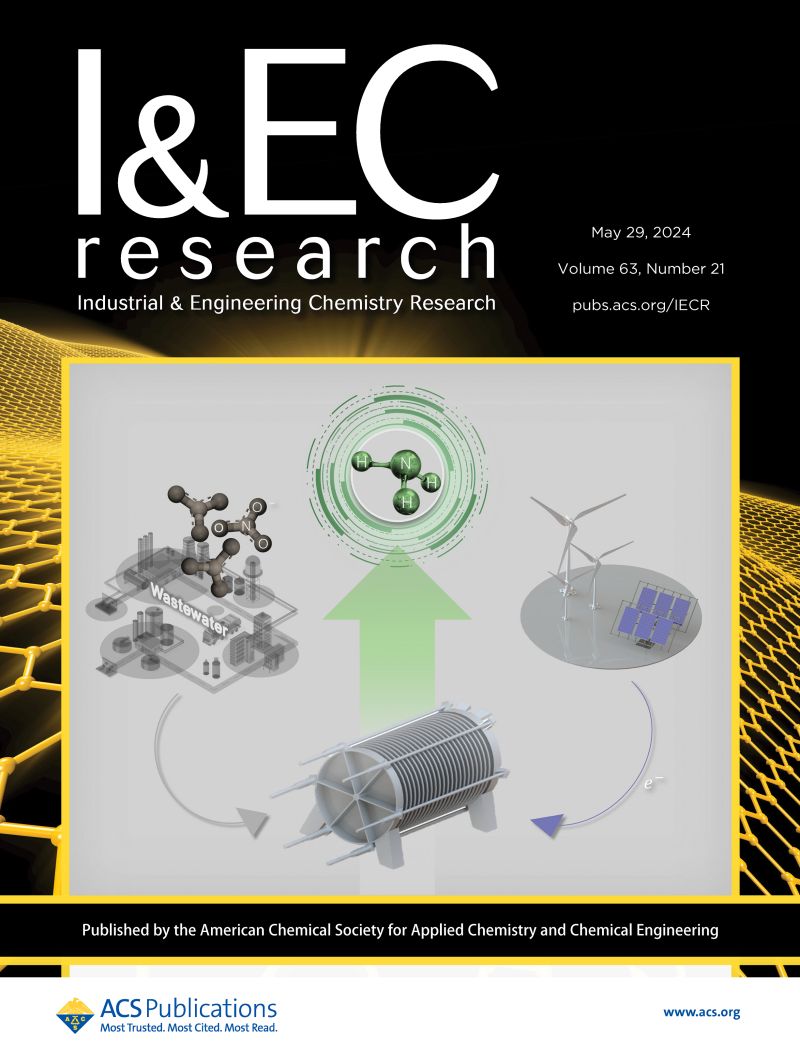用聚乙二醇-1000优化聚丙烯腈膜高效处理城市污水
IF 3.8
3区 工程技术
Q2 ENGINEERING, CHEMICAL
引用次数: 0
摘要
研究了聚乙二醇(Mw: 1000 Da, PEG-1000)掺入聚丙烯腈(PAN)膜对城市污水强化处理的影响。表面功能分析证实了成功的整合,而形态学研究显示从指状腔(原始PAN膜)转变为含有PEG-1000的海绵状结构。PEG-1000浓度的增加增强了亲水性,保持了热稳定性,同时增加了表面粗糙度。然而,纯水通量略有下降。值得注意的是,在模拟和真实的城市污水中,掺有≥2 wt % PEG-1000的PAN膜的防污性能得到了显著改善,通量回收率为80%,而原始膜的回收率为73.8%。牛血清白蛋白(BSA)在所有膜上的排斥值超过99%。长期评估(长达10次循环)表明,含有2 wt % PEG-1000的膜具有优异的防污稳定性。这些结果表明,在城市污水处理中,加入2 wt % PEG-1000是提高PAN膜性能的最佳选择。本文章由计算机程序翻译,如有差异,请以英文原文为准。

Optimizing Polyacrylonitrile Membranes with Polyethylene Glycol-1000 for Efficient Municipal Wastewater Treatment
This study investigates the effect of polyethylene glycol (Mw: 1000 Da, PEG-1000) incorporation on polyacrylonitrile (PAN) membranes for enhanced municipal wastewater treatment. Surface functionality analysis confirmed successful integration, while morphological studies revealed a transformation from finger-like cavities (pristine PAN membrane) to a spongy structure with PEG-1000. Increased PEG-1000 concentration enhanced hydrophilicity and maintained thermal stability while increasing surface roughness. However, pure water flux decreased marginally. Remarkably, PAN membranes blended with ≥2 wt % PEG-1000 exhibited significant improvements in antifouling performance when tested with simulated and real municipal wastewater, achieving flux recovery values of >80% compared to 73.8% for pristine membranes. Bovine serum albumin (BSA) rejection values exceeded 99% across all membranes. Long-term evaluations (up to 10 cycles) demonstrated excellent antifouling stability for membranes containing 2 wt % PEG-1000. These findings suggest that incorporating 2 wt % PEG-1000 is optimal for enhancing PAN membrane performance in municipal wastewater treatment.
求助全文
通过发布文献求助,成功后即可免费获取论文全文。
去求助
来源期刊

Industrial & Engineering Chemistry Research
工程技术-工程:化工
CiteScore
7.40
自引率
7.10%
发文量
1467
审稿时长
2.8 months
期刊介绍:
ndustrial & Engineering Chemistry, with variations in title and format, has been published since 1909 by the American Chemical Society. Industrial & Engineering Chemistry Research is a weekly publication that reports industrial and academic research in the broad fields of applied chemistry and chemical engineering with special focus on fundamentals, processes, and products.
 求助内容:
求助内容: 应助结果提醒方式:
应助结果提醒方式:


